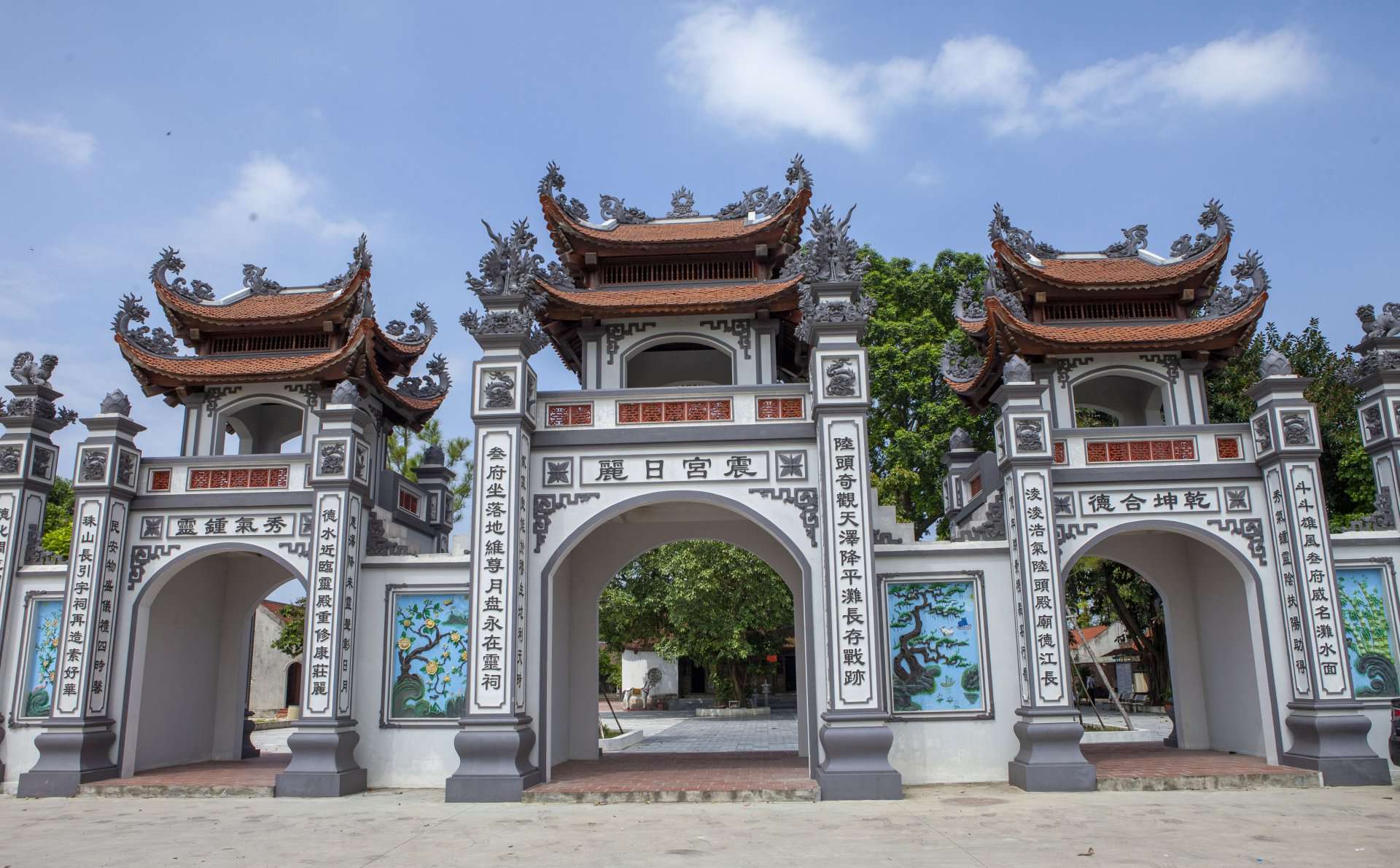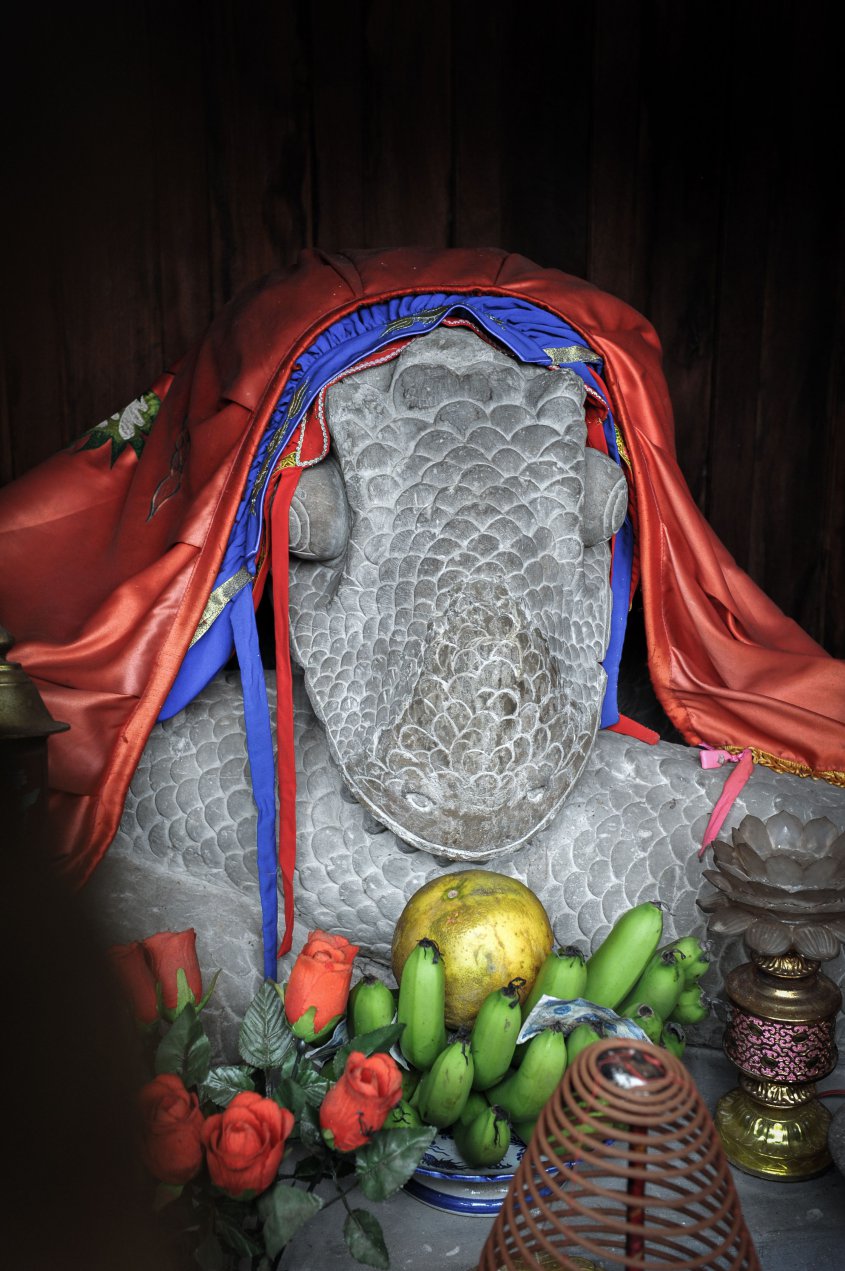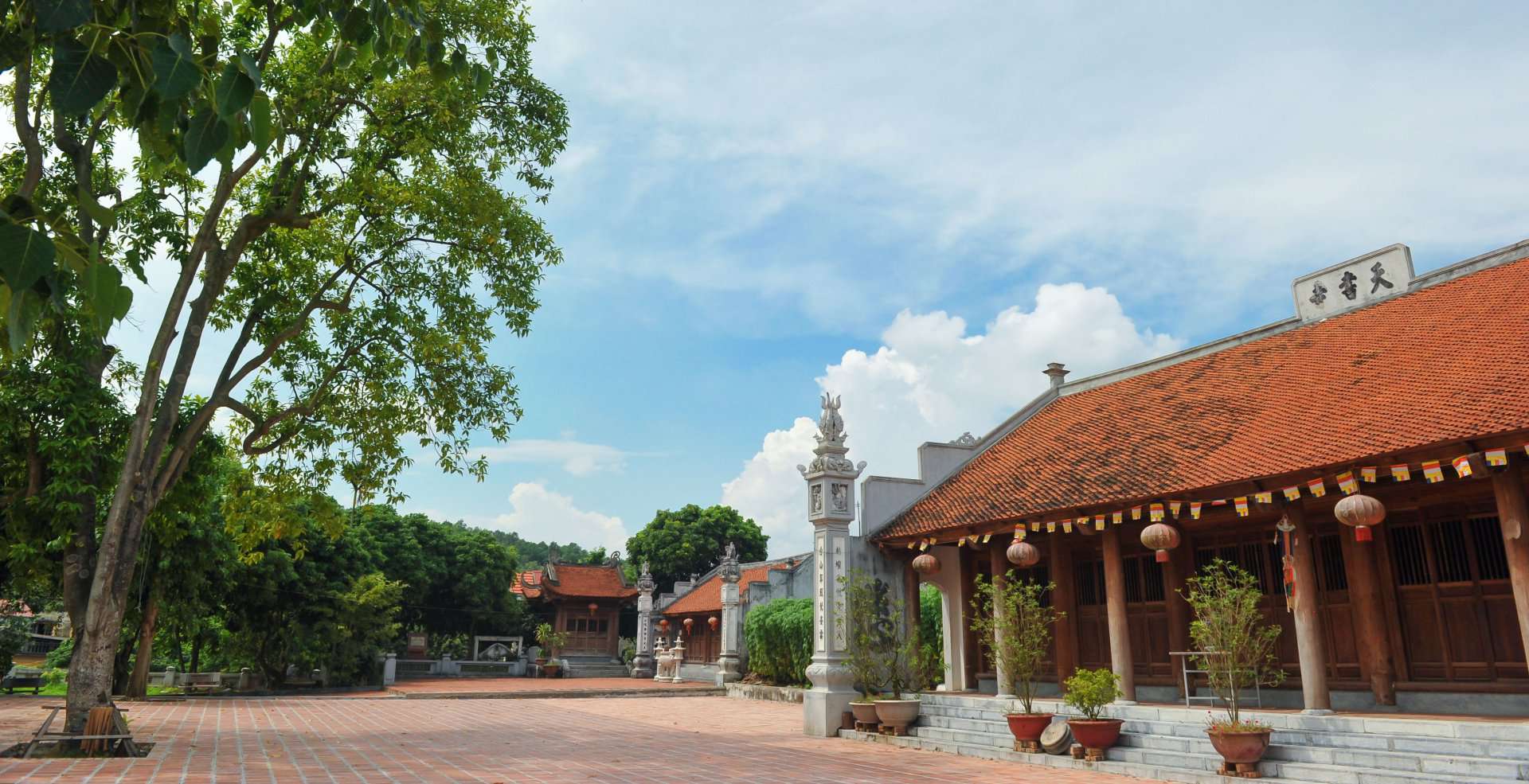Thai A
Visitors to rural Gia Binh district in Bac Ninh province will find many sacred temples and pagodas on the bank of the Duong River. There, they can light incense, pray for the gods’ divine blessings, and listen to timeless legends.

Near the capital Hanoi lies rural Gia Binh – Bac Ninh, a tranquil land rich in history and cultural values. Drive 10km along the dyke of the Duong River and you will pass many sites where Vietnamese gods and heroes are worshipped with great reverence. An old saying states: “A general in life, a god after death”. People who achieve great things are said to become guardian deities after passing away, helping to protect later generations.
Visitors to Gia Binh district can learn many old tales and enter sacred temples to light incense and pray for the gods’ divine blessings.
The most famous temple is Tam Phu in Cao Duc commune, which honors the Three Kings – the rulers of Heaven Palace, Earth Palace, and Water Palace in the Mother Goddess religion. There is also a hall to worship the Buddha. This form of worship is common in the Northern Delta. The temple’s location and history relate to famous Tran dynasty victories in the war of resistance against invading Yuan-Mongols. Nguyet Ban is an area on the lower course of the Duong River, adjacent to the Luc Dau River. Here, the kings of the Tran Dynasty held the Binh Than conference, a famous referendum that allowed them to win three great victories over what was then the world’s most powerful army.

Only about 1km away, still in Cao Duc commune, travelers can light incense on the altar of Cao Lo (277-179 BC). This genius engineer helped design the magic crossbow and Co Loa Citadel for King An Duong Vuong, contributing to the establishment of the Au Lac state. According to historical records, Cao Lo was a native of this land who later fought beside King An Duong Vuong to expand the realm. Posterity honors him as a Supreme Deity and the kings of later dynasties also granted him many honorary titles.

Continuing their journey, travelers will reach Dai Bi Pagoda, a place deeply associated with the great monk Huyen Quang (1254-1334). While following the Buddhist path to enlightenment, he still sought to help the common people. Famous as an excellent scholar, he was a principal graduate and court official in the Tran Dynasty, who later became a great monk, known to the world as one of the “Three Founders of the Truc Lam Zen Sect”. Many stories recount his life and good deeds, including his efforts to promote the Dharma and the teachings of Buddha, and bring salvation to those in need. He also wrote many profound poems about life and religion. Visitors to the Temple of the Three Founders at Dai Bi Pagoda, Thai Bao commune, can learn about timeless beliefs that are part of Vietnam’s cultural values.

Before reaching Thuan Thanh district, Dong Sau commune, as travelers enter the Temple of Grand Master Le Van Thinh (1050-1096), they can discover legends about a loyal court official who was a master of governance, diplomacy, and administration in the Ly dynasty. The life of this Grand Master, a man whose whole heart and mind was dedicated to his country and its people, was plagued by great injustice. Historians later proved that his outstanding talents and revolutionary methods drew ill will, and he was forced to abandon his high-ranking post at court. Exiled to a distant land, he was only allowed to return to his hometown when he grew old and frail. After his death, local people honored him as a village deity, and built temples and pagodas on his family’s estate. The temple is now restored and contains many precious artifacts, the most special of which is a stone statue of a dragon tearing itself apart. This statue was recently rediscovered, and many scholars believe it is a manifestation of the Grand Master’s tragic sorrow, for his life was full of injustice.
Traveling through this sacred land, visitors can admire the peaceful northern countryside, where many relics remind us of long-ago heroes and legends.










